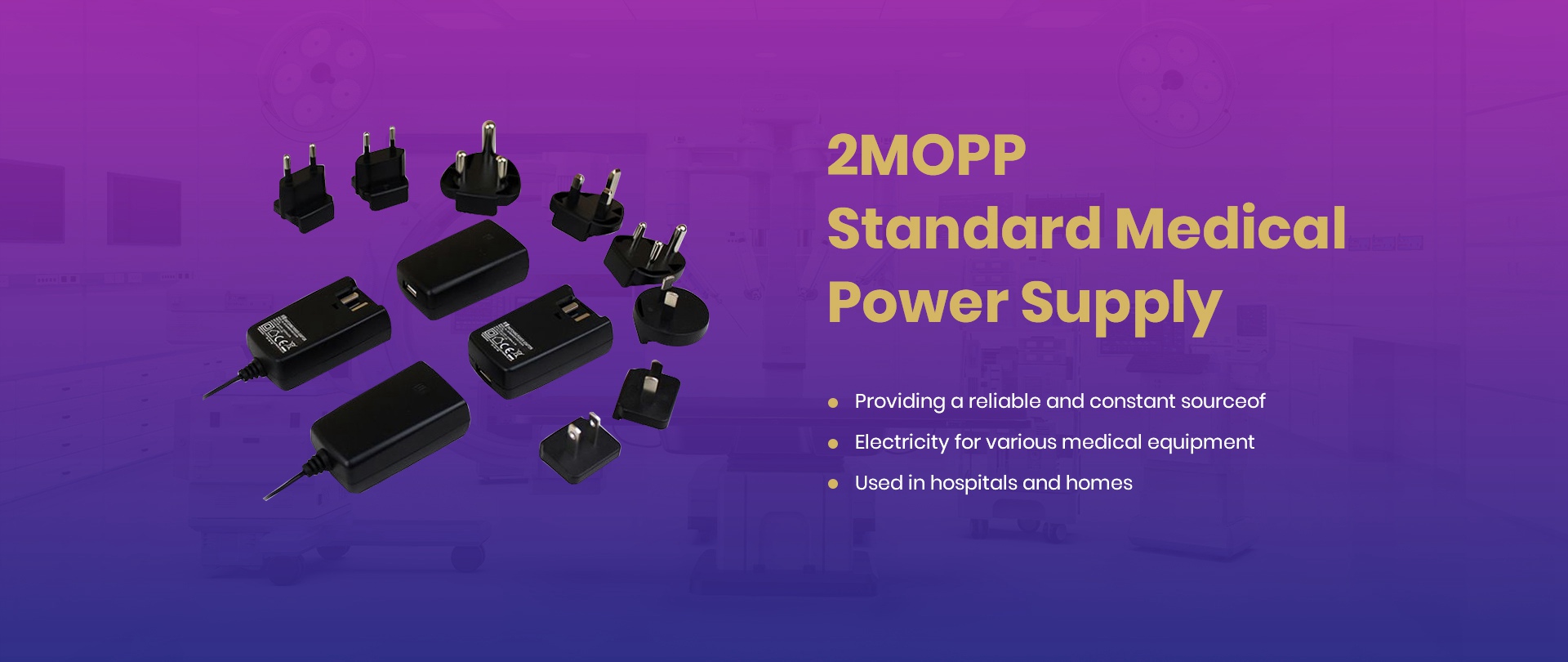What is the difference between a medical power supply and a normal power supply?
Power supplies are essential components in all electronic devices, converting electrical energy into the required voltage and current for proper operation. While general-purpose power supplies are used in industrial, commercial, and consumer applications, medical power supplies are specifically designed to meet the rigorous safety, reliability, and performance standards required for medical environments. Understanding the differences between these two types of power supplies is crucial for ensuring safe and efficient operation, particularly in healthcare settings where patient safety is paramount.
1. Safety Standards and Certifications
One of the most significant differences between a medical power supply and a normal power supply lies in compliance with safety standards. Medical power supplies must meet IEC 60601-1, an international standard that ensures electrical safety for medical equipment. This regulation covers insulation, leakage current, and electromagnetic compatibility (EMC) to protect both patients and medical personnel from potential electrical hazards.
On the other hand, normal power supplies typically comply with IEC 60950-1 (for IT and communication equipment) or IEC 62368-1 (for AV and computing devices). These standards are less stringent compared to IEC 60601-1 since the risk associated with general-purpose power supplies is lower.
Additionally, medical power supplies often need to meet FDA (Food and Drug Administration) and UL (Underwriters Laboratories) requirements in the U.S., as well as CE and EN standards in Europe, ensuring they can be safely used in hospitals and clinics.
2. Leakage Current Limits
Leakage current is another key differentiator between medical and normal power supplies. Medical-grade power supplies have strict limits on leakage current, as excessive leakage can pose serious risks to patients, especially those connected to life-supporting equipment.
For example, in medical environments, patient-applied parts (Type BF or CF) require ultra-low leakage current to prevent electrical shocks. In contrast, general-purpose power supplies have much higher acceptable leakage currents, as minor electrical leakage in consumer electronics or industrial applications does not pose a direct threat to human life.
3. Isolation and Insulation Requirements
Medical power supplies are designed with double or reinforced insulation to protect patients and operators from electric shock. They also feature higher isolation voltages, typically 4,000V AC or higher, to ensure proper separation between input and output circuits.
In contrast, normal power supplies may have only basic insulation or lower isolation ratings, as they are not intended for critical applications where human contact is frequent.
4. Electromagnetic Interference (EMI) and Electromagnetic Compatibility (EMC)
Medical equipment often operates in environments where multiple electronic devices are in close proximity. To prevent electromagnetic interference (EMI) that could disrupt sensitive medical instruments, medical power supplies must comply with strict EMC regulations. They must not only emit minimal electromagnetic interference but also be resistant to external EMI from other medical equipment.
Normal power supplies, while still subject to EMC regulations, do not have to meet the stringent medical EMI requirements. They are usually tested for compliance with FCC Part 15 (for consumer electronics) or CISPR 32/35 (for industrial applications), which are more lenient compared to medical EMC standards.
5. Reliability and Longevity
Medical power supplies are built for 24/7 continuous operation and must maintain high reliability over an extended lifespan. They are often equipped with redundant designs, high-quality components, and advanced thermal management to ensure stable performance in critical applications.
Conversely, normal power supplies are designed for general use and may not be optimized for continuous, mission-critical operation. Their components may degrade faster under heavy use, making them unsuitable for medical applications where failure could result in life-threatening situations.
6. Fail-Safe Features and Protection Mechanisms
Medical power supplies incorporate multiple layers of fail-safe features, including:
· Over-voltage protection (OVP) – Prevents excessive voltage output that could damage sensitive medical devices.
· Over-current protection (OCP) – Limits the current flow to prevent overheating.
· Over-temperature protection (OTP) – Shuts down the power supply if it exceeds a safe operating temperature.
· Short-circuit protection (SCP) – Automatically disconnects power to prevent fires or equipment damage.
While normal power supplies may also include basic protection mechanisms, they are not as comprehensive or as rigorously tested as those in medical power supplies.
7. Application Differences
Medical Power Supply Applications
Medical power supplies are used in a wide range of healthcare and life-supporting devices, including:
· Ventilators and patient monitors – Require high reliability and low noise levels.
· MRI and CT scanners – Demand ultra-low electromagnetic interference.
· Surgical and cosmetic laser equipment – Need precise and stable power delivery.
· Infusion pumps and dialysis machines – Must maintain strict safety standards to protect patients.
Normal Power Supply Applications
Normal power supplies are used in non-medical applications, such as:
· Computers, TVs, and consumer electronics
· Industrial automation and robotics
· LED lighting and smart home devices
· Networking and telecommunications equipment
These applications do not require the strict safety, EMI, and reliability standards necessary for medical environments.
Medical power supplies are engineered to meet the highest safety, reliability, and electromagnetic compatibility standards, ensuring they can be safely used in life-critical healthcare applications. Compared to normal power supplies, they feature stricter safety regulations, lower leakage current, enhanced insulation, and fail-safe mechanisms to protect both patients and medical staff.
While general-purpose power supplies are sufficient for industrial and consumer applications, they lack the necessary safety features for medical use. For any medical device manufacturer or hospital facility, choosing an IEC 60601-1 compliant medical power supply is essential for ensuring safety, regulatory compliance, and uninterrupted operation in healthcare environments.







